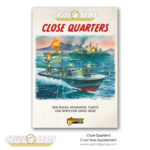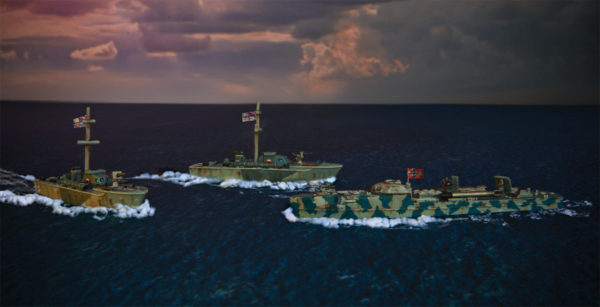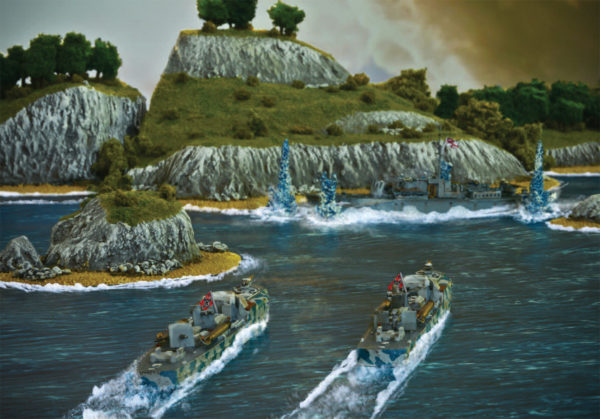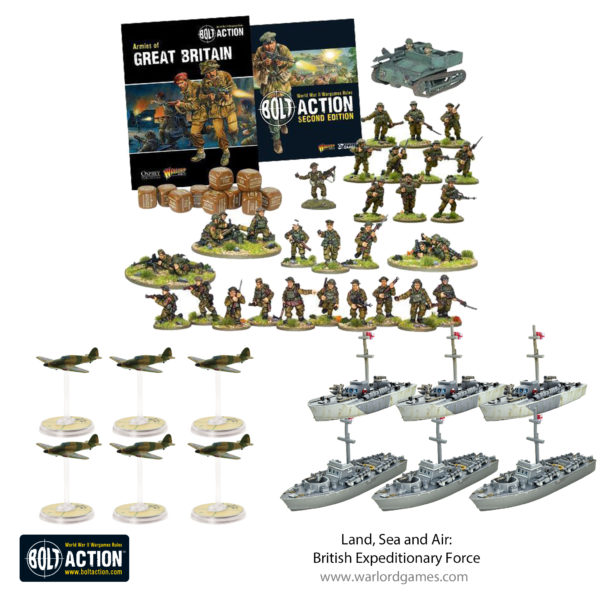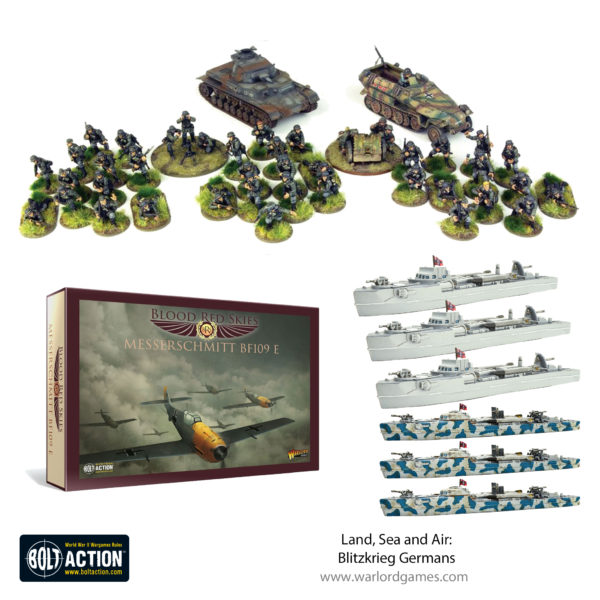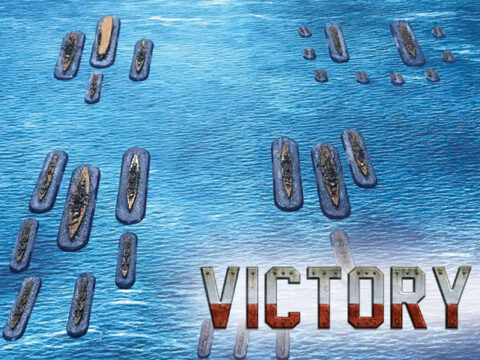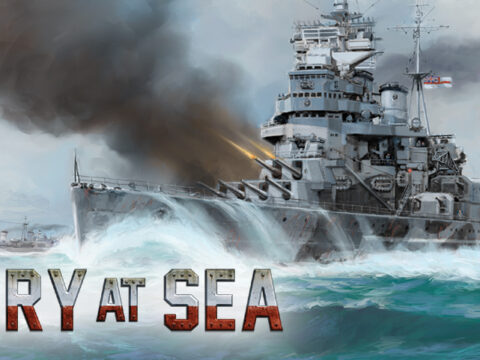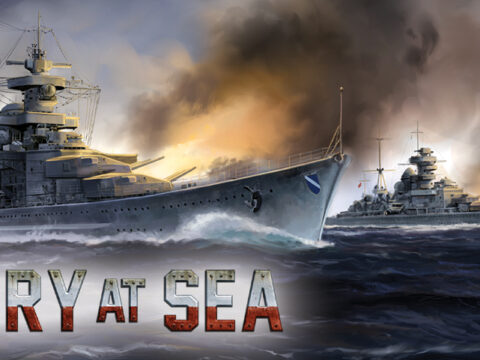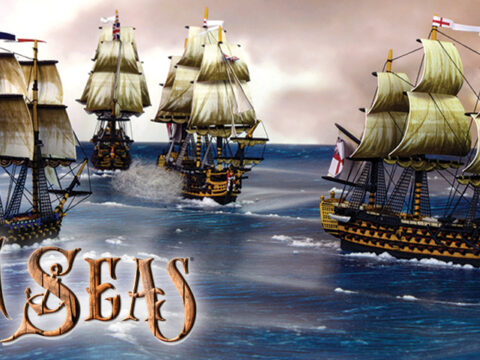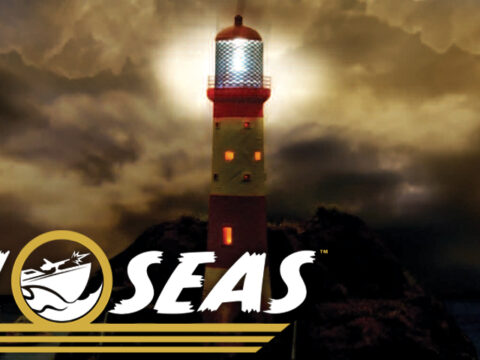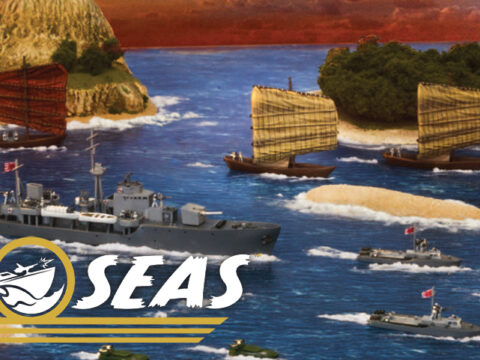Pinned down by strafing fighters and shrieking dive bombers, several divisions of Allied troops must be rescued from the Dunkirk beaches!
With the release of Close Quarters, designer John Lambshead has provided a system for embarking and disembarking troops during a game of Cruel Seas. We’re using these rules to recreate the daring rescue of British, French and Belgian troops from the embattled beaches of Dunkirk.
Beach Landing Rules
Any ships can transport troops at a pinch; at Dunkirk, the RN destroyer Shikari rescued close to 500 troops on each trip and the little coastal paddle steamer, Medway Queen, lifted 7,000 in all. However, warships are
crowded places even without passengers and rescuing troops for a short hop across the Channel is a far cry from delivering troops onto a beachhead in a fit condition to fight.
Apart from anything else, there needs to be some way of moving soldiers from ship to shore. So while the Prince Leopold was designed to carry 1,400 passengers as a civilian ferry, when militarised her complement was merely 250 troops. Players should bear this in mind when designing their own scenarios involving commandeered transports.
Combat point guide for creating your own scenarios: Approximately 30 infantry, or 1 armoured car = 1 Combat Point, 1 medium tank = 2 Combat Points, and 1 heavy tank = 4 Combat Points.
A Tanker or Merchantman can carry up to 3 Combat Points. An MTB can carry 1 combat point, providing it is composed of infantry only.
A specialised landing craft (or small and medium-sized boat such as an MTB or patrol boat) may land any troops it is carrying by moving up to the edge of the shore at Slow speed and stopping. On the next turn, the troops land when the landing craft is activated.
The craft itself must stay stationary for this turn. On the following turn, it may reverse out and off the shoreline using the normal rules in the Cruel Seas rulebook, page 24.
Troops may be loaded back onto a suitable vessel using the same procedure. Combat Points are considered destroyed if they are on a vessel at sea that is itself sunk, but is not destroyed if the ship they are on is against the shore – the troops are assumed to simply evacuate onto land.
The Scenario
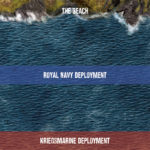 Before play begins, check the results of the Dunkirk Perimeter Bolt Action scenario. The surviving British units are now on the beach awaiting evacuation. Use the guidelines presented above to assign an appropriate number of combat points to the survivors of the previous battle. If no troops survived (or you didn’t get a chance to play Bolt Action), place 1d6+1 combat points on the beach.
Before play begins, check the results of the Dunkirk Perimeter Bolt Action scenario. The surviving British units are now on the beach awaiting evacuation. Use the guidelines presented above to assign an appropriate number of combat points to the survivors of the previous battle. If no troops survived (or you didn’t get a chance to play Bolt Action), place 1d6+1 combat points on the beach.
Next, both players should assemble their respective fleets. The Royal Navy player has a 50% point advantage (If the German player has 1,000pts, the British player gets 1,500pts.) The British player is restricted to the following vessels:
- Vosper MTB Type I
- Armed Trawler
- Tanker
- Merchantman
- Little Ship (See below)
The British player must take one Little Ship for each other ship in their force.
The Little Ships
| Ship: | Turn: | Ship Size: | Slow: | Combat: | Fast: | Hull: | Equipment: | Points: |
| Little Ship | R | M | 8 | 16 | 24 | 25 | 1x MG | 5 |
The true saviours of the Dunkirk beaches were the “Little Ships” – a cavalcade of fishing smacks, pleasure yachts, trawlers and other small craft, hastily commandeered by the Royal Navy for the express purpose of recovering the stranded BEF divisions.
Objectives & Victory
The British player gains 2 Victory Points for each combat point collected from the beaches and removed from the table in a transport vessel.
The German player gains 1 Victory Points for each enemy vessel sunk.
Any vessels that successfully evacuate the area become targets in the Blood Red Skies scenario; Naval Strike!
Land, Sea & Air!
These fantastic bundles give you a complete Bolt Action army along with a small squadron of aircraft and a flotilla of motor torpedo boats.

